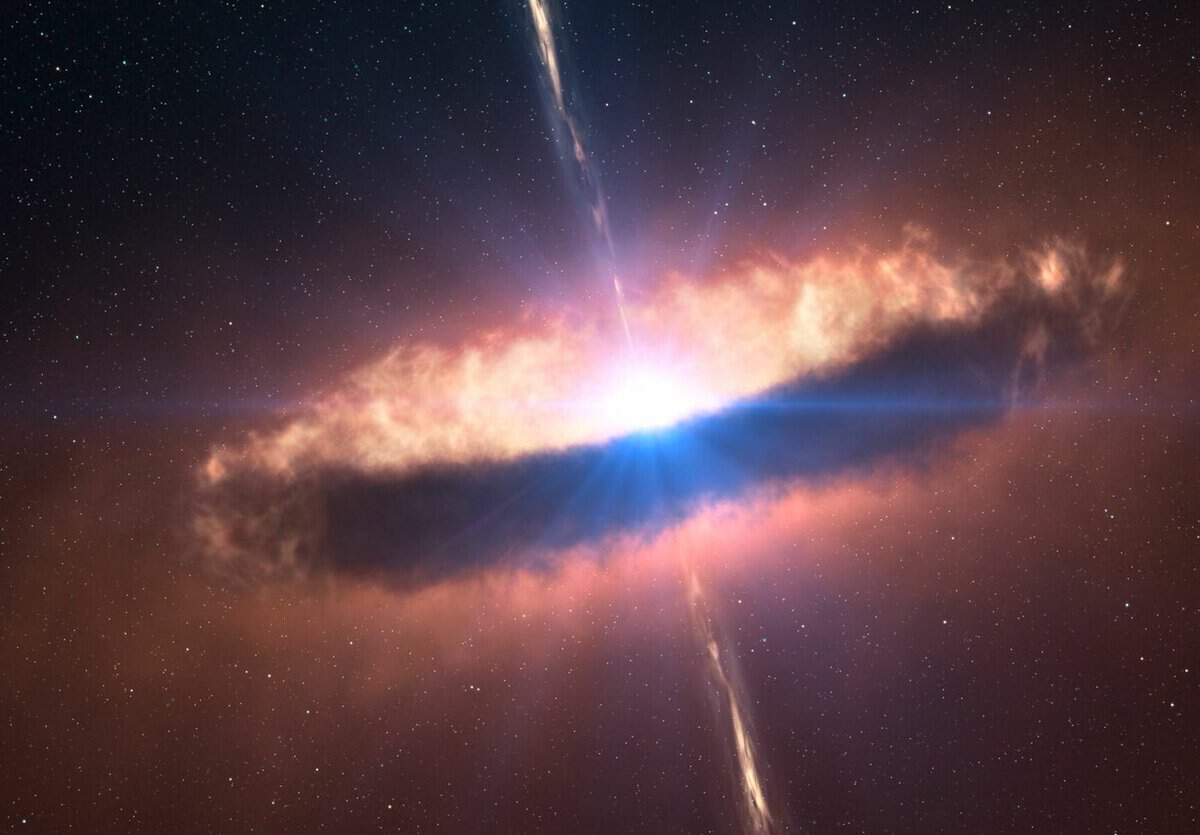
The majority of entities in the Cosmos experience their own life cycle. Indeed, stars are no exception to this rule. They, too, come into existence and eventually perish, much like other celestial bodies. However, the trajectory of a star’s life, which encompasses the successive transformations it undergoes, is incredibly lengthy. Below, we shall exclusively examine the key phases that constitute the evolution of stars.
As we are aware, a star is an immense luminous sphere composed of gas, existing in a state of balance. Within this sphere, thermonuclear reactions transpire, leading to the generation of energy and the emission of light.
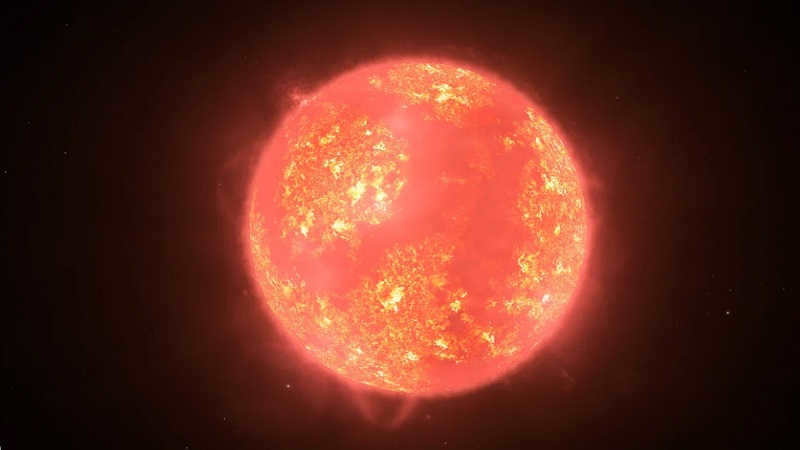
The life cycle of stars
Like us, stars also have unique journeys. They experience different stages of evolution due to various influences. It’s remarkable how similar this is to the human experience. We are all products of the same natural and cosmic forces that shape our universe.
Among the stages of stellar evolution, the following are particularly notable:
How stars come into existence
To begin with, immense gas clouds take shape in the vast expanse of outer space. Specifically, these frigid, tenuous interstellar gas clouds undergo compression due to the force of gravity. This marks the commencement of the star formation process.
During its final stage, the entity is referred to as a protostar. It is neither merely a cloud nor a fully-fledged celestial body. As the gas clouds undergo compression, their temperature undergoes a dramatic rise. As a result, thermonuclear reactions for the synthesis of helium from hydrogen commence within them.
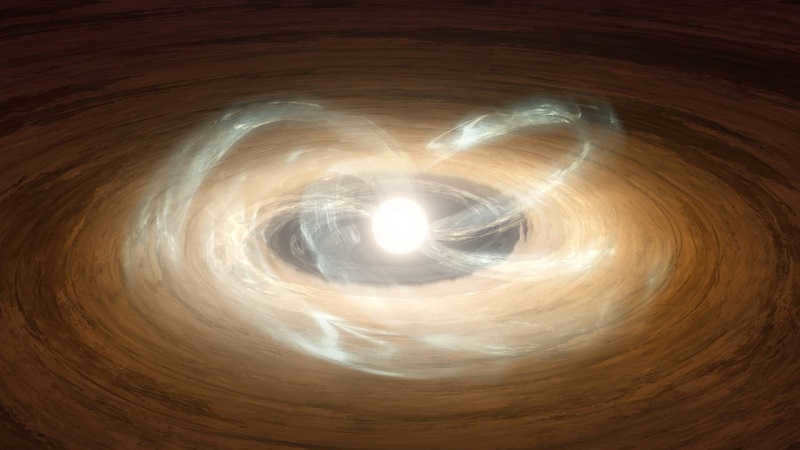
The birth of a star
At this point in time, a star is born as nuclear processes begin. Typically, at this stage, it becomes a main sequence star, although there are some exceptions such as subdwarfs and brown dwarfs. These exceptions have lower mass and less powerful nuclear fusion.
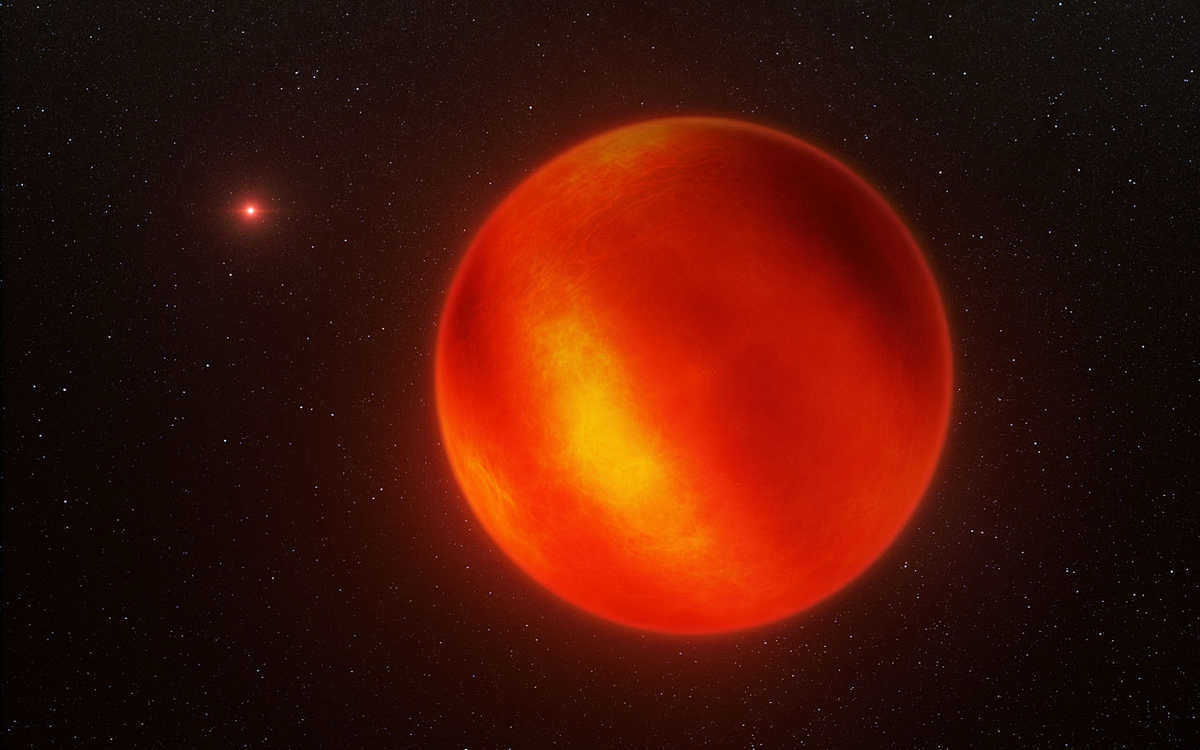
By the way, the main phase of a star’s life is the most extensive, accounting for approximately 90% of its total lifespan. The remaining stages are significantly shorter in duration. This phenomenon likely explains the prevalence of stars in the universe that are currently in this developmental stage. However, the subsequent evolution of a star is directly influenced by its mass.
The evolution of stars with different masses
It should be noted that stellar objects possess distinct characteristics.
Low mass
If a star’s initial mass is less than 0.08 solar masses, hydrogen fusion does not occur in the core. In other words, nuclear fusion does not take place, and energy is generated through core compression. Brown dwarfs serve as an example of such stars. Their ultimate stage is to become a black dwarf, which is a cooled star that does not emit energy.
Regrettably, red dwarfs with similar masses face the same fate. However, unlike their brown counterparts, hydrogen is undergoing fusion within them.
Indeed, as the helium core approaches, hydrogen ceases to undergo combustion in the layer source. Consequently, the luminosity contracts and intensifies. Subsequently, the final phase in the lifecycle of a low-mass red dwarf ensues, giving rise to the degenerate helium dwarf. During this period, the majority of the stellar body is comprised of helium, with a hydrogen shell, and stability is maintained by a degenerate electron gas.
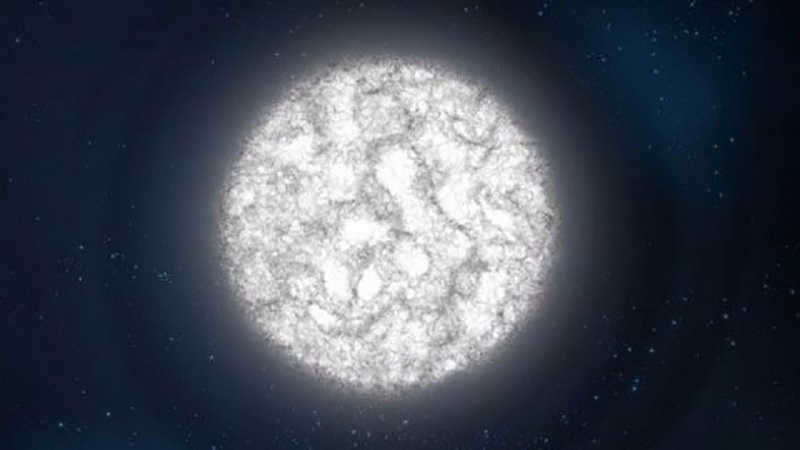
Average mass
It turns out that stars with an average mass follow a specific evolutionary path.
For stars with masses ranging from 0.5 to 8 times the mass of the Sun, they eventually become carbon-oxygen white dwarfs, which are composed of degenerate gas.
When stars with these mass values deplete their hydrogen core (which is also burned during this process), it begins to burn in a shell around the helium core. This causes the star to evolve into the red giant stage.
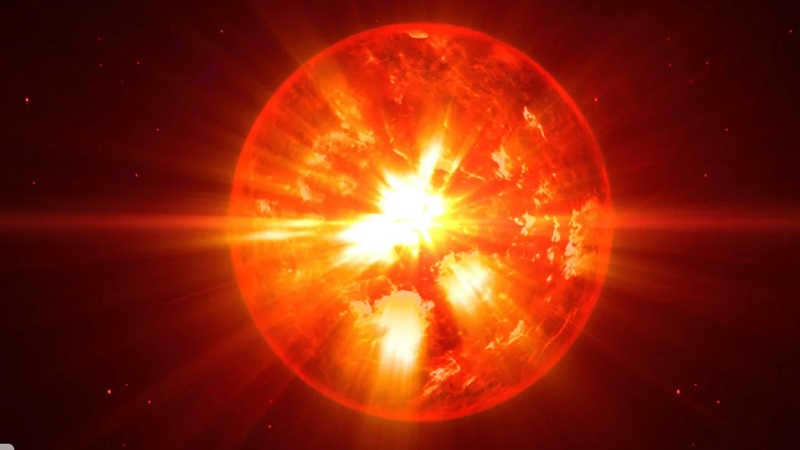
Indeed, the process of reincarnation differs slightly when a star reaches a certain mass. If the mass index of the star falls between 0.5 and 3 times the mass of our Sun, an explosion of helium will take place at its core. This is due to the presence of degenerate gas, resulting in what is known as a helium flash.
However, when it comes to celestial bodies of greater mass (ranging from 3 to 8 times the mass of the Sun), the burning of helium takes place without any explosive effects. This is due to the fact that the gas does not undergo degeneration as a result of the consistent high nuclear temperature. As helium undergoes combustion, the convective core, which refers to the region where energy transfer occurs through the mixing of substances, starts to expand. Simultaneously, a shell of hydrogen ignites around the convective core, further contributing to the transformation of the star into a red giant.
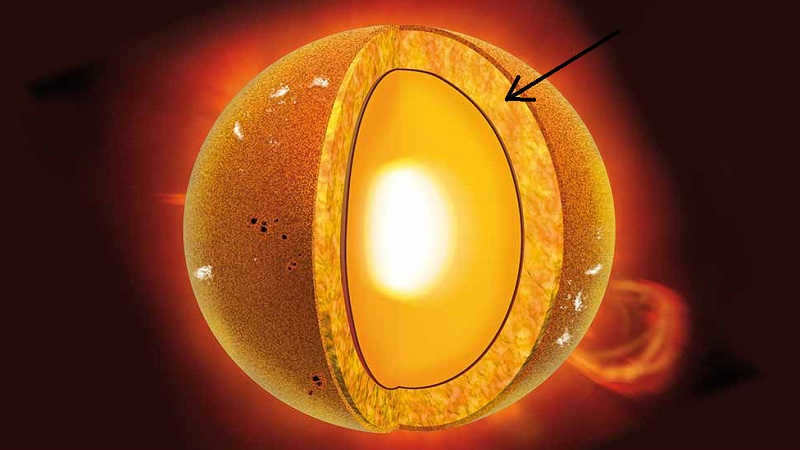
Evolving of stars in the final phase.
Naturally, after a certain period, the helium supply will be depleted. Consequently, it will begin to burn in a layer near the core, causing the core to contract and heat up. Simultaneously, the hydrogen shell expands and cools. Thus, the star undergoes a transformation from a red dwarf to a supergiant.
In the subsequent stage of its lifespan, a carbon-oxygen core filled with degenerate gas forms at the core of stars ranging from 0.5 to 8 solar masses. This process leads to the formation of a white dwarf. However, its shell continues to expand and eventually separates from the star.
Furthermore, the shell that has already been separated continues to grow larger and eventually transforms into a planetary nebula. Additionally, as previously stated, the star remains a white dwarf with degenerate gas.
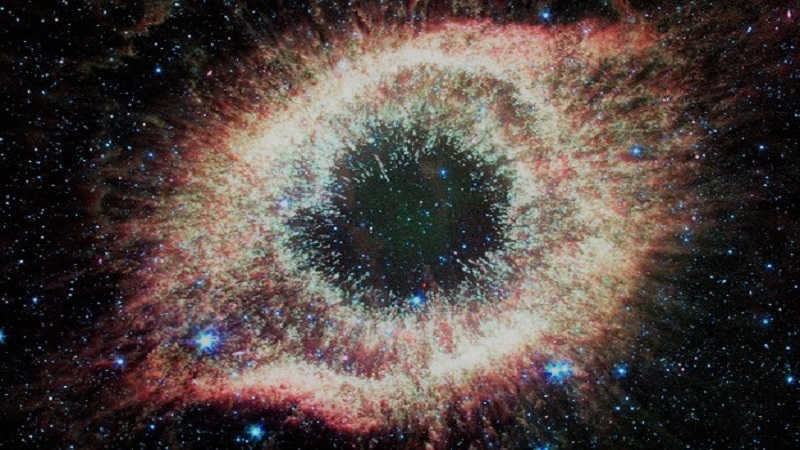
The life of high-mass stars
The development of stars with high mass (ranging from 8 to 10 solar masses) follows the same pattern as average stars. However, they do not have enough time to form a carbon-oxygen core. Instead, the core contracts and degenerates, and only then does carbon ignition occur.
Therefore, instead of a helium flash, a carbon flash occurs. This is also known as carbon detonation.
Sometimes, this type of detonation causes a star to explode as a supernova. Other times, a high-mass star evolves without an explosion (the gas may not degenerate as the temperature increases in the core) and continues its life.
Therefore, when a nuclear implosion occurs, it can result in the formation of either a neutron star or, in some cases, a black hole, depending on the mass of the nuclear material.
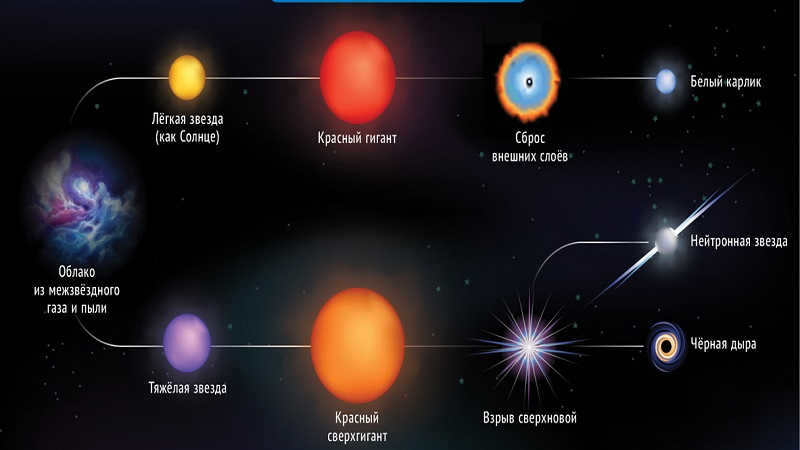
The birth and progression of stars can be said to commence through nuclear reactions, and conclude upon their cessation.
Naturally, the development and lifespan of stars vary, as the processes within them unfold differently. Furthermore, the ultimate stages of their evolution also differ. While certain patterns exist, the future remains unknown to all. For instance, as one celestial body expands, it may encounter another. Why not? It is evident that the mass of the object and the processes occurring within it play significant roles.
Regardless, the origin of these diverse celestial entities, which are so magnificent and awe-inspiring, remains one of the marvels of the Universe. Moreover, their countless contributions to the formation of other equally marvelous objects play a significant role in the advancement of our cosmos.
What lies ahead for our Sun? How does a black hole come into existence, and what exactly is a protostar? These questions can all be answered through the study of stellar evolution.
The field of astrophysics has made significant progress in understanding stellar evolution. Theoretical models are supported by reliable observations, and while there may still be some gaps in our knowledge, the overall life cycle of a star has been well-established for quite some time.
Birth
The process begins with the presence of a molecular cloud, which is a vast region of interstellar gas that possesses enough density to enable the formation of hydrogen molecules within it.
Subsequently, an event occurs, which can be triggered either by a shock wave stemming from a nearby supernova explosion or by natural dynamics within the molecular cloud itself. Regardless of the cause, the end result remains the same – gravitational instability ensues, leading to the emergence of a central point of gravity within the cloud.
Yielding to the allure of gravity, the surrounding matter begins to revolve around this central point, accumulating in layers on its surface. Over time, a harmonious spherical core with an escalating temperature and luminosity takes shape – a protostar.
Furthermore, the gas and dust disk encircling the protostar spins increasingly faster, as more particles collide within its interior due to the mounting density and mass, consequently causing the temperature to continue to rise.
When the temperature of the protostar reaches millions of degrees, the initial thermonuclear reaction takes place at its core. At this point, two hydrogen nuclei combine to form a helium nucleus, overcoming the Coulomb barrier. This process continues with another two nuclei, and so on, until the chain reaction spreads throughout the region where the temperature allows for the synthesis of helium from hydrogen.
Subsequently, the energy from the fusion reactions quickly reaches the surface of the star, causing a significant increase in its brightness. Therefore, if a protostar has sufficient mass, it evolves into a fully developed young star.
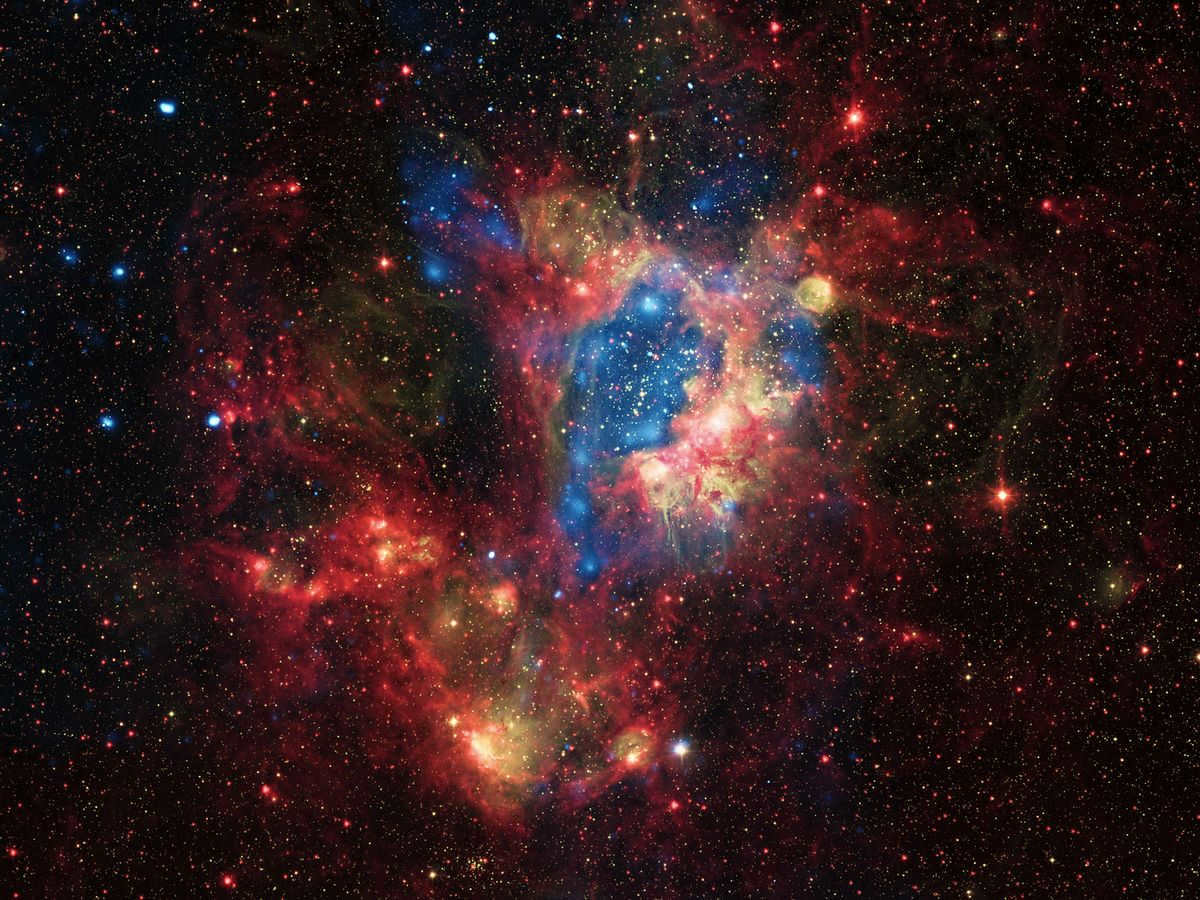
No childhood, no adolescence, no youth.
All young stars that reach the necessary temperature to initiate a thermonuclear reaction within their core then transition into their lengthiest and most stable phase, which encompasses 90% of their total lifespan.
During this stage, the only significant occurrence is the gradual depletion of hydrogen in the fusion reaction zone. It is essentially the slow extinguishing of life. The star will gradually, over billions of years, grow hotter and experience an increase in the intensity of thermonuclear reactions, as well as its luminosity, but this is the extent of its evolution.
Of course, there are instances that can expedite stellar development, such as close proximity or even a collision with another star, but this is unrelated to the individual luminary’s life cycle.
There are also unique “failed” stars that are unable to reach the main sequence – meaning they are unable to withstand the internal pressure of thermonuclear reactions.
These stars are known as brown dwarfs and are of low mass (less than 0.0767 times the mass of the Sun). Due to insufficient gravitational compression, they lose more energy than is generated through hydrogen fusion. Eventually, the thermonuclear reactions within these stars cease, leaving them with a gradual but unavoidable cooling process.
In the artist’s view, a brown dwarf is depicted. (Image: ©ESO/I. Crossfield/N. Risinger)
An eventful old age
Contrary to humans, the most active and intriguing period in the “life” of massive stars commences towards the conclusion of their existence.
The subsequent development of each individual celestial body that has reached the end of the main sequence – which is the point when there is no longer any hydrogen available for fusion at the star’s core – is directly influenced by the mass and chemical composition of the celestial body.
If a star has less mass on the main sequence, its lifespan will be longer and its ending will be less spectacular. For instance, stars with masses less than half that of the Sun, such as red dwarfs, have never experienced “death” since the Big Bang. Based on calculations and computer simulations, these stars can peacefully burn hydrogen for tens of billions to tens of trillions of years due to the weak intensity of thermonuclear reactions. Eventually, they will likely fade away like brown dwarfs.
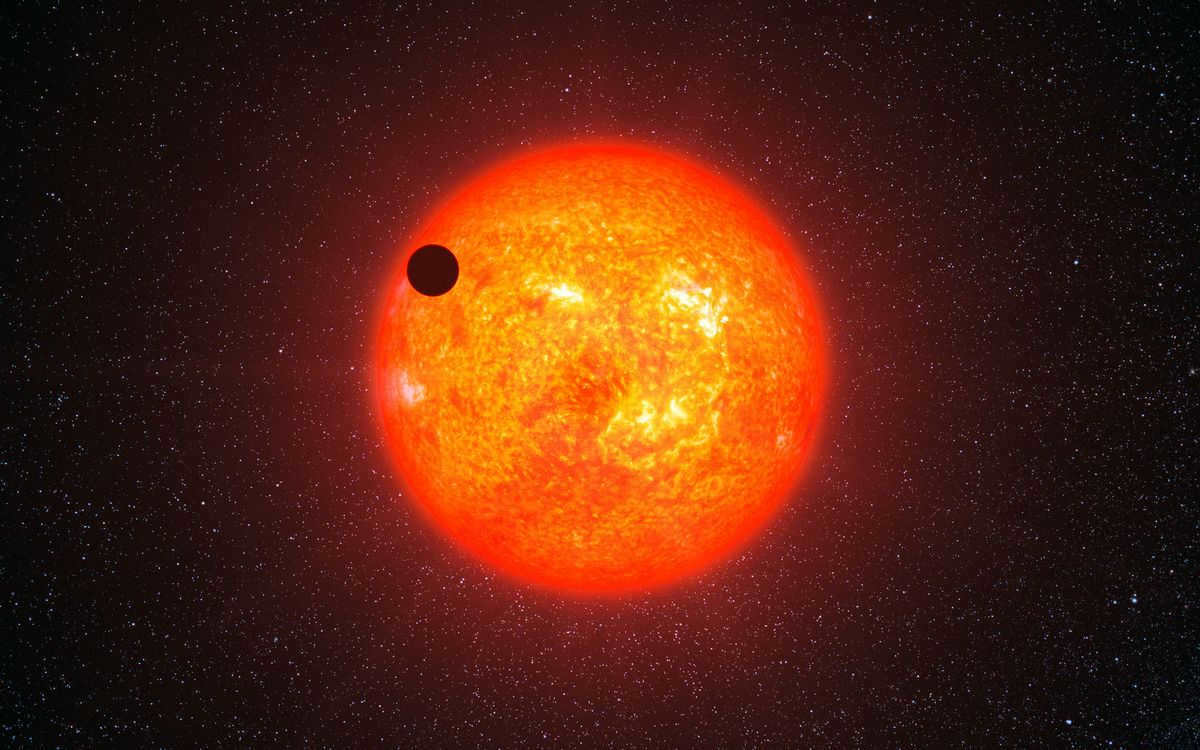
Stars with a mass ranging from half to ten times that of the Sun have the ability to burn heavier elements in their composition, starting with helium, then carbon, oxygen, and finally iron-56, which is sometimes referred to as “thermonuclear combustion ash”.
After the hydrogen in the star’s core is exhausted, it enters a phase known as the red giant stage. During this phase, the star undergoes significant transformations as helium and carbon reactions are triggered.
Essentially, it is a process of death. The star expands hundreds of times in size and turns red before eventually shrinking again. The luminosity of the star also undergoes dramatic changes, increasing by thousands of times and then decreasing once more.
White dwarfs undergo a similar destiny as red dwarfs – a peaceful depletion that can last for billions or even trillions of years, unless, of course, there exists a neighboring companion star, which the white dwarf can siphon mass from in order to increase its own.
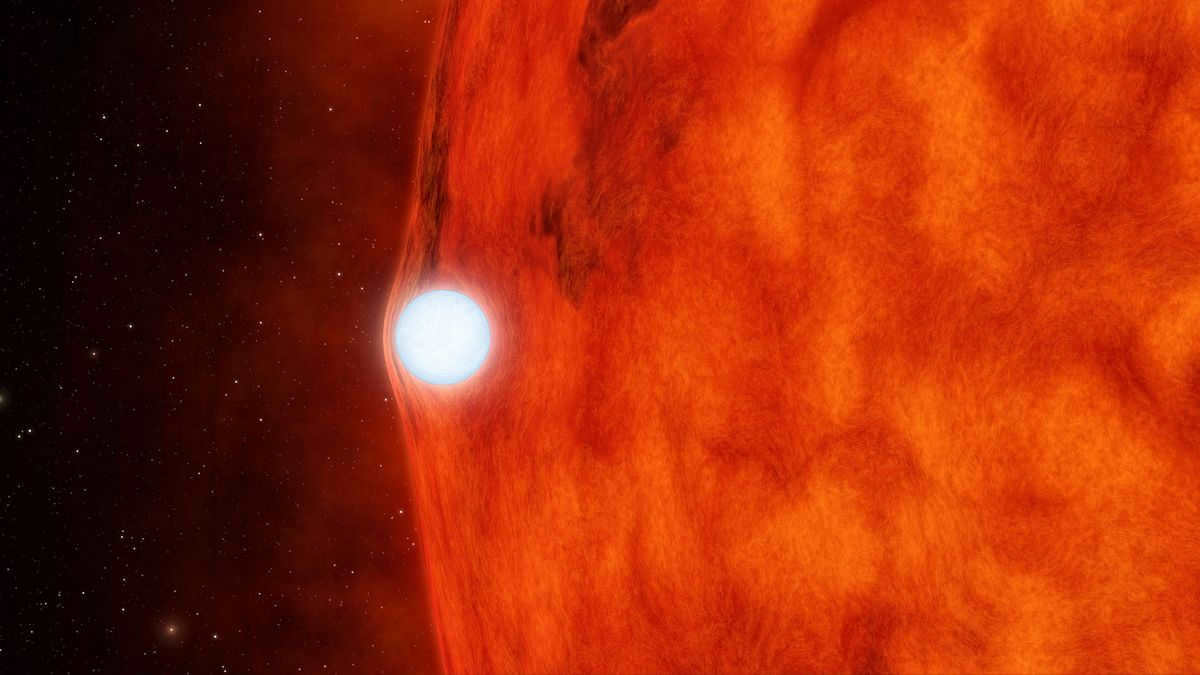
Absolutely Ancient Age
If a star is extremely fortunate enough to possess a mass of around 12 times that of the Sun or even greater, the ultimate phases of its life cycle are marked by significantly more extraordinary occurrences.
In the event that the mass of the core of the red giant surmounts the Chandrasekar threshold of 1.44 solar masses, the star does not simply shed its outer layers during the final stage, but rather discharges the accumulated energy in a tremendously potent thermonuclear explosion – a supernova.
In the heart of the remnants of the supernova, dispersing stellar material with immense force for countless light years around, the remaining entity is no longer a white dwarf, but instead a superdense neutron star, with a radius of merely 10-20 kilometers.
However, if the mass of the red giant exceeds 30 solar masses (or in other words, becomes a supergiant), and the core’s mass surpasses the Oppenheimer-Volkov limit, which is approximately 2.5-3 solar masses, then no white dwarf or neutron star will be formed.
What emerges at the center of the remains of the supernova is something much more awe-inspiring – a black hole. This occurs because the core of the exploded star becomes incredibly compressed, causing even neutrons to collapse. As a result, nothing, not even light, can escape the boundaries of the newly formed black hole, or more precisely, its event horizon.
Massive stars, specifically blue supergiants, have the potential to bypass the red supergiant stage and undergo a supernova explosion as well.
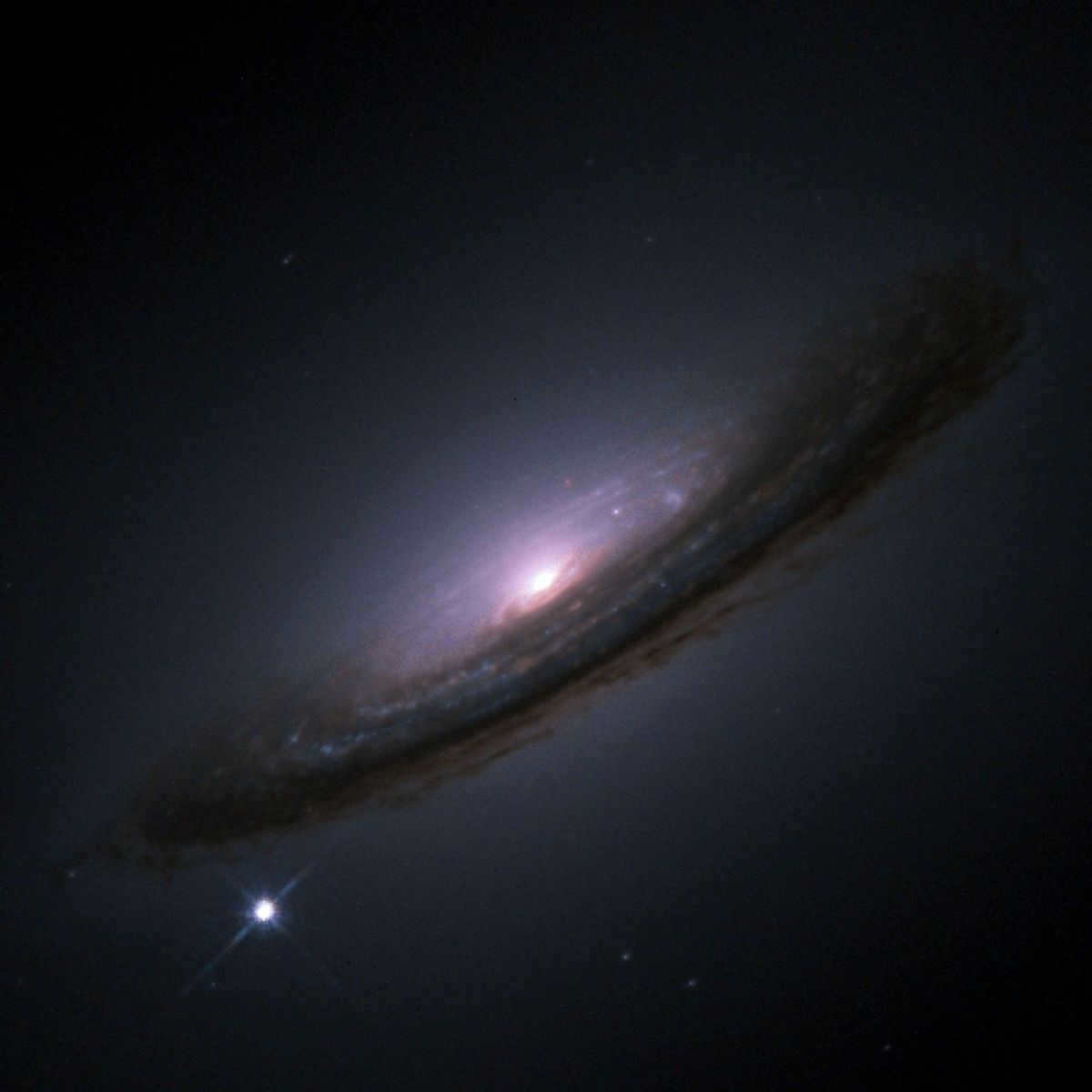
What Lies Ahead for Our Sun?
Our star, the Sun, falls into the category of medium-mass stars. By carefully reading the preceding section of this article, one can already begin to anticipate the Sun’s trajectory.
However, a series of astronomical events await humanity even before the Sun transforms into a red giant. In approximately one billion years, the thermonuclear reactions in the Sun’s core will become so intense that they will cause the Earth’s oceans to vaporize, rendering life on our planet impossible. Simultaneously, the conditions for life on Mars will improve, potentially making it a habitable destination at some point in the future.
After approximately 7 billion years, the Sun will reach a point where its outer regions will undergo a thermonuclear reaction due to its increased heat. This will result in a significant expansion of the Sun’s radius by approximately 250 times and its luminosity by roughly 2700 times, leading to its transformation into a red giant.
During this stage, the Sun will experience an increased solar wind, causing it to lose about a third of its mass. However, it will still have enough time to absorb Mercury.
As hydrogen burns out around the solar core, the mass of the core will continue to increase. Eventually, this increase in mass will trigger a phenomenon known as a helium flare, causing the fusion of helium nuclei into carbon and oxygen through thermonuclear reactions. As a result, the radius of the star will decrease significantly to approximately 11 times the size of a standard solar radius.
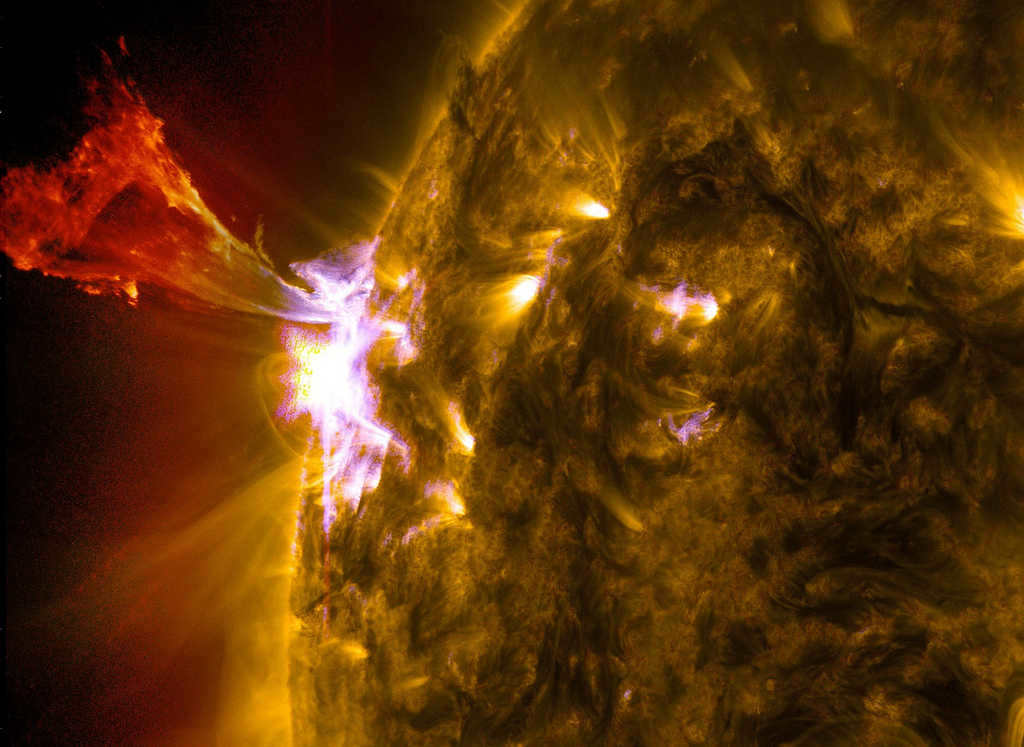
However, after a span of 100 million years, the fusion process involving helium will shift towards the outer regions of the celestial body, leading to its expansion once again and causing it to attain the dimensions, brightness, and radius characteristic of a red giant.
During this phase, the intensity of the solar wind will increase significantly, ultimately propelling the outer regions of the star into the vast expanse of outer space, where they will coalesce to form an expansive planetary nebula.
Consequently, the location previously occupied by the Sun will now house a white dwarf of comparable size to the Earth. Initially, this celestial body will emit a brilliant luminosity, but over time, its radiance will gradually diminish.
Astronomers are currently scrutinizing the remote depths of the nascent Universe in an attempt to unravel the mechanisms behind the ignition of the very first stars.
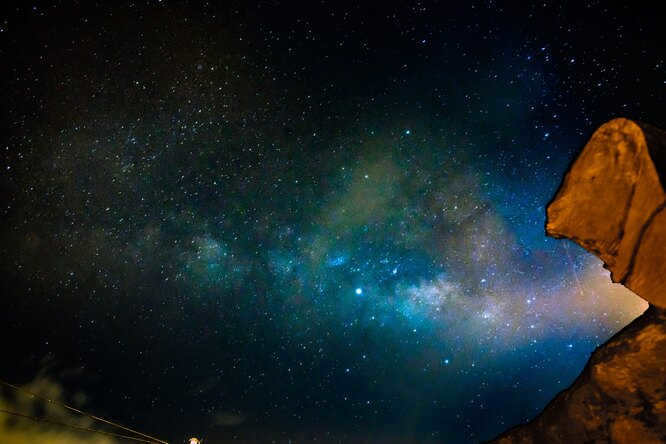
Twenty years ago, the existence of a substantial number of galaxies older than seven billion years was a subject of doubt among scientists. This skepticism was dispelled by chance when Robert Williams, the head of science programs at the Hubble Space Telescope, sought advice on how to best utilize his allotted observational time. After a heated debate, someone suggested a simple solution: point the telescope at any point in the sky and “drill a hole of maximum depth” (using those exact terms).
This concept turned out to be incredibly productive. As a component of the HDF (Hubble Deep Field) project, the orbiting observatory observed an area of the celestial sphere measuring 5.25 square angular minutes for over ten days. The outcome was the discovery of several thousand galaxies situated at extreme distances, some of which (with a redshift of roughly 6) emerged just one billion years after the occurrence of the Big Bang. It became abundantly clear that the formation of stars and star clusters was already well underway when the Universe was a mere one-fifth of its current age. Subsequent observations within the HDF-South and Great Observatories Origins Deep Survey initiatives only served to corroborate these findings. Then, in January 2011, astronomers from the Netherlands, the United States, and Switzerland announced the possible identification of a galaxy with a redshift exceeding ten times, which materialized no later than 480 million years following the Big Bang. There is optimism that within this decade, both space-based and ground-based telescopes will capture the light emitted by stars with a redshift of twenty-fold, which escaped into space when the Universe was no older than 300 million years.
While galaxies composed of individual first-generation stars have yet to be found, these stars themselves remain undetected. The reason for this is that their radiation, weakened by the redshift, reaches Earth in the form of extremely faint streams of photons that fall within the far infrared range. Nonetheless, over the few hundred million years since their formation, these celestial bodies (also known as population III stars) have had a significant impact on the composition of intergalactic matter, which can be observed even with modern telescopes. On the other hand, scientists have a solid understanding of the mechanisms that initially set in motion the formation of stars and star clusters more than 13 billion years ago.
Stars from the initial generation remain undetected as individuals, in contrast to the galaxies they comprise. The reason for this is clear – their radiation reaches our planet in the form of feeble photon streams, which are deflected by the redshift in the far infrared range. Nevertheless, within a few hundred million years from their formation, these celestial bodies (also known as population III stars) have influenced the composition of intergalactic matter to such an extent that these alterations are observable even with modern telescopes. Conversely, theorists possess a solid understanding of the mechanisms that initially triggered the formation of stars and star clusters more than 13 billion years ago.
Precursor cloud formations
Stars are formed by the condensation of diffuse cosmic matter due to gravitational forces. This process was understood even by Newton, as evidenced by a letter he wrote in 1961 to the philologist Richard Bentley. However, modern science has greatly expanded on Newton’s explanation. In the early 20th century, British astrophysicist James Jeans discovered that a gas cloud only collapses if its mass exceeds a certain limit. As the gas is pulled towards the center of the cloud, its pressure increases and sound waves propagate outward. If the velocity of these waves is less than the gravitational pull of the gas, the cloud continues to collapse, causing the density of matter in the central zone to increase. Since the speed of sound is proportional to the square root of temperature, and the rate of gravitational compression increases with mass, a gas cloud will collapse more easily if it is colder and heavier.
During the early stages of the universe, which was only a few tens of millions of years old, the cosmic gas primarily consisted of hydrogen (76% of mass) and helium (24%). This gas formed shortly after the Big Bang, along with a small amount of lithium. At that time, the temperature of the gas was similar to the relic microwave radiation, which was around 100K. Additionally, the space was filled with a high density of dark matter, although its density has decreased over time due to the expansion of the Universe. Dark matter, like regular matter, has gravitational effects and contributes to the overall mass of gas clouds. In these conditions, the mass of Jeans was approximately 105 solar masses. This represents the minimum total mass required for the formation of the first stars, consisting of both ordinary (baryonic) and dark matter. It is worth noting that the stars in our own Galaxy, including the Sun, formed without any assistance from dark matter.
While the exact timing of the first star formation remains unknown, there is speculation among specialists that it could have occurred approximately 30 million years following the Big Bang. It is important to note that this estimate may be subject to revision as scientific advancements continue to unfold. Nevertheless, there is a strong basis for the belief that the universe harbored stellar populations by the time it reached 100 million years of age.
The initial stars displayed a complete lack of consideration for others. They inundated the surrounding expanse with unforgiving ultraviolet radiation that readily obliterated hydrogen molecules, thus inhibiting the emergence of new stars. However, their emission of radiation, particularly X-rays, incessantly heated the adjacent space. Consequently, the cosmic gas gradually warmed up to temperatures that facilitated the dominance of atomic hydrogen in the cooling process, thereby rekindling the process of star formation. Furthermore, this phenomenon was further intensified by the fact that atomic hydrogen radiates greater amounts of energy than molecular hydrogen at temperatures exceeding 10,000 K. The subsequent phase of vigorous star formation, known as population III, occurred within the earliest galaxies, which were still relatively small in size (as classified by modern standards) and referred to as dwarf galaxies.
The Era of Brilliance
The time before the birth of stars was not marked by intricacy. Its condition can be described by only a handful of cosmological factors – specifically, the density of various forms of matter and the temperature of residual radiation. Young stars served as both potent emitters of electromagnetic waves and creators of chemical elements. Despite their short lifespan, these initial sources of light brought about significant changes to the cosmic surroundings.
The initial stars originated within regions of heightened gas particle density that emerged during the gravitational collapse of baryonic and dark matter clouds with masses ranging from 105-106 solar masses. While various scenarios of star formation exist (some of which can be calculated, albeit incompletely, using supercomputers), they generally agree that as the primary clouds fragmented within the dark matter halo, clusters of gas formed, attracting several hundred solar masses. This amount aligns with the Jeans mass for a temperature of approximately 500 K and a gas density of roughly 10,000 particles per 1 cm³. Consequently, shortly after their formation, the gas clusters lost stability and underwent gravitational collapse, with their temperature only moderately increasing due to the cooling effect of molecular hydrogen. Eventually, these clusters transformed into accretion disks, giving birth to the first stars.
Until recently, it was thought that a collapsing blood clot with such characteristics no longer breaks down and becomes the precursor of a single star. Computations based on approximations of the speed at which gas accumulates towards the center of the disk demonstrate that the mass of these stars could not surpass 1000 solar masses. This is a speculative maximum limit, and it remains uncertain whether such supergiants truly existed. Cautious estimations propose that first-generation stars were not heavier than 300, at most 500 solar masses. The minimal mass limit for these stars is established by the fact that molecular hydrogen can solely diminish the temperature of the cloud to 200 K, and as a result, a star below 30 solar masses simply cannot be formed. Since the primary clouds fragmented into multiple localized thickenings, it is highly plausible that the first stars emerged in sets of hundreds, thousands (or even more) of luminous bodies. Granted, they were not yet galaxies (those evolved later), but still rather impressive stellar communities.
Recently, questions have emerged regarding the credibility of the theory proposing that the first stars originated in isolation. In February 2011, a group of astrophysicists from Germany and the United States published a study in the journal Science, presenting the findings of their computer simulations on the dynamics of accretion disks that led to the formation of the initial stars. The analysis revealed that these disks likely fragmented, resulting in the birth of stars not as solitary entities, but rather in pairs, triplets, and even larger clusters.
Is it possible that some stellar embryos were expelled from the disk boundaries by the gravitational pull of their neighbors before they grew to a massive size? If this is the case, then it is possible that there are lighter stars within the third population that have survived for billions of years and still exist today. However, according to Professor Volker Bromm from the University of Texas at Austin, we have only been able to observe the early stages of the accretion disk’s evolution for a few hundred years. He explains, “It is likely that the first stars, even within the light group, grew to at least a few tens of solar masses, as previously believed. Therefore, the possibility of moderate mass stars appearing during that time is simply a logical possibility.”
From celebrities to hyperholes
Black holes, which were lighter than themselves, left behind the first stars and are unlikely to have more than a hundred solar masses. However, analyzing the radiation of ancient quasars suggests that the Universe already had black holes a billion times heavier than the Sun 800-900 million years after the Big Bang. How could these giants have emerged so quickly? “At first glance, there is no mystery,” says Abraham Loeb, a professor of astronomy at Harvard University and author of a recently published monograph on the first stars. “If you continuously supply the hole with matter, its mass will exponentially increase over time, similar to a colony of bacteria in a nutrient-rich environment. By following this regime for a few hundred million years, the hole, which initially had a hundred solar masses, will steadily reach a billion. However, the hypothesis of stable feeding of the black hole by accreting gas is not accurate. Calculations have shown that such accretion is interrupted for several reasons. When galaxies merge, black holes form double systems that emit powerful gravitational waves, which expel gas from the surrounding space. Without a continuous supply of gas, exponential growth cannot occur. However, there is another possibility. Computer modeling results indicate that true giant stars could have formed inside the first dwarf galaxies, which certainly existed 500 million years after the Big Bang. At that time, there were no hydrogen molecules left in space, and atomic hydrogen could not reduce the temperature to less than 10,000 K. However, these galaxies still had a solid volume and captured much more gas with the help of dark matter compared to the clouds that gave rise to the very first stars. In this scenario, hot collapsing gas does not disintegrate into numerous clumps but quickly generates single and paired stars of several million solar masses without the preliminary formation of accretion disks. Million-mass black holes could have been left behind, with a real chance of growing a thousand-fold during the next 300-400 million years. This theory solves the mystery of the early appearance of supermassive black holes, at least for now.”
At that time, space was devoid of any remaining hydrogen molecules, and the presence of atomic hydrogen was unable to bring the temperature below 10,000 K.
TechInsider Network Edition
Founder of “Fashion Press” LLC: 119435, Moscow, Bolshoi Savvinsky per. 12, str. 6, floor 3, room II;
Editorial office address: 119435, Moscow, Bolshoi Savvinsky per. 12, p. 6, str. 6, floor 3, room II; Editorial office address: 119435, Moscow, Bolshoi Savvinsky per. 6, floor 3, room II;
Editor-in-Chief: Nikita Vasilenok
Editorial office e-mail address: [email protected]
Editorial office phone number: +7 (495) 252-09-99
Information product label: 16+
The network edition is registered by the Federal Service for Supervision in the Sphere of Communications, Information Technologies and Mass Media, registration number and date of decision on registration: series EL No. FS 77 – 84123 dated November 09, 2022.
Similar to humans, stars also experience a series of stages throughout their existence. Here, we outline the key milestones in the life cycle of these immense celestial entities.
advertisement
Stars are colossal spheres of gas that radiate light and warmth. Composed primarily of hydrogen and helium, they possess tremendous masses. Take, for instance, the most massive star discovered in our cosmos, known as R136a1. It boasts a mass 315 times that of our Sun and shines with a brilliance nearly 9 million times greater.
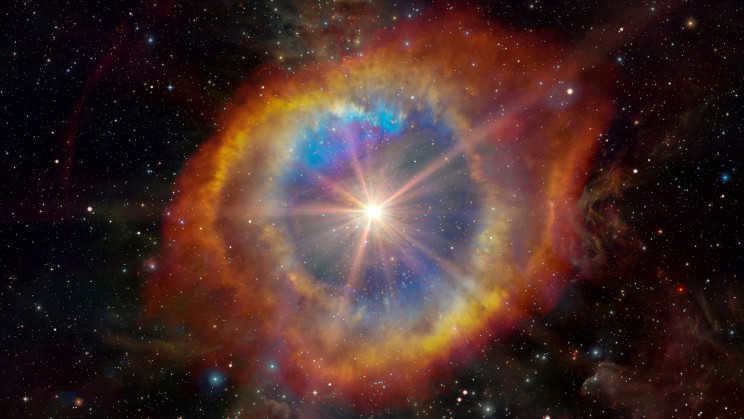
Stars and nebula. Mode-list/iStock
advertisement
Stars are so massive that they ought to collapse due to the gravitational force they generate by their own mass. However, the tremendous gravitational force is counteracted by the immense heat and pressure inside the star, which is a result of the nuclear fusion reactions happening in its core. This delicate balance between gravity and gas pressure, brought about by energy production, is known as hydrostatic equilibrium, and it is a self-regulating and finely calibrated process.
As a result, when the energy generation rate in the core decreases, gravity intensifies and the star starts to contract, boosting the temperature and pressure within the core. This, in turn, can enhance energy generation and restore equilibrium to the system. Nonetheless, it is important to note that stars, much like humans, also undergo a cycle of birth and death.
What is the process of star formation?
In the vast expanse of space between stars, there exists numerous expansive clusters of dust and gas, primarily composed of hydrogen and helium. These clusters, known as nebulae, can span over vast distances, extending for many light-years. Notable examples of nebulae include the Eagle Nebula, which is home to the famous Pillars of Creation, the Coal Sack Nebula, a dark nebula that can be seen without the aid of a telescope, and the Orion Nebula, another visible nebula.
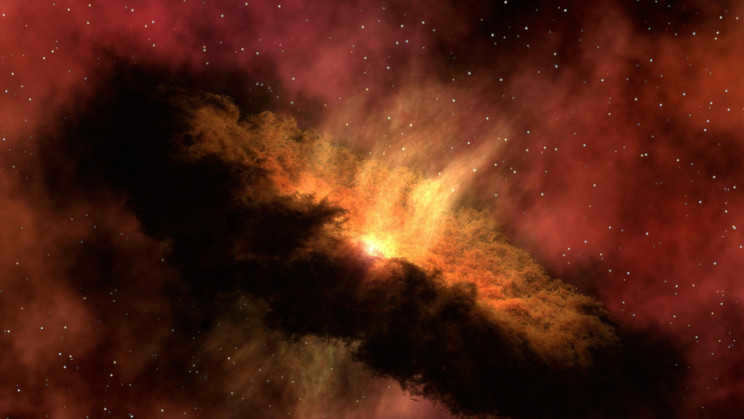
Source: Pixabay/pexels
The dispersion of gas and dust in nebulae eventually leads to the formation of clumps known as nodes, which are attracted by gravity and gather more and more gas and dust. When the mass of a node reaches a critical value, it starts to collapse due to its own gravitational force. The material within the node becomes increasingly dense, and the temperature at its center rises.
This dense and hot core transforms into a protostar. As more matter is accumulated, the collapse process continues, and the protostar’s core becomes even denser and hotter. Eventually, it becomes so hot and dense that hydrogen begins to fuse into helium, releasing a significant amount of heat and light. This marks the birth of a new star!
The maturation of a star is the primary stage
The process of disintegrating a cluster of dust and creating a star can span millions or even billions of years. It is important to acknowledge that not all of the material within the cluster will contribute to the formation of the star; the remaining material may develop into planets, asteroids, or comets, or simply remain as dust.
Once a star has formed and nuclear fusion initiates in its core, it ceases to collapse as the energy released from the fusion reaction generates an external radiation pressure that counteracts the internal gravitational force, maintaining equilibrium. The phase in which fusion becomes stable signifies the mature stage of star formation and is referred to as the main sequence.
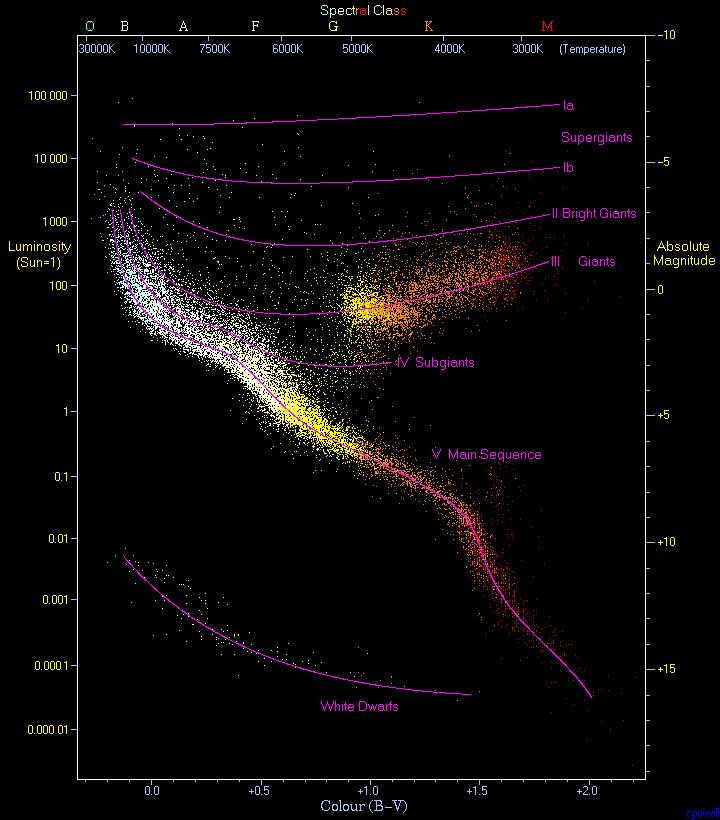
The Hertzsprung-Russell diagram is a visual representation of the relationship between the color, temperature, brightness, and lifespan of a star. It shows how these factors depend on the amount of matter involved in a star’s birth.
When two protons, which are hydrogen ions, collide, they can form a nucleus of a hydrogen isotope called deuterium and positrons. Alternatively, these protons can interact with other protons to create another isotope of helium known as helium-3. The fusion of two helium-3 nuclei can then produce an unstable nucleus of beryllium-6, which eventually decays into helium-4 and two protons. In each step of this process, energy is released.
The colors observed in stars can provide valuable information about their temperature and size. According to the Hertzsprung-Russell diagram above, cooler and smaller stars appear red, while hotter and larger stars appear blue.
Demise of a celestial body
The fusion of hydrogen ions into helium nuclei is the driving force behind the life cycle of a celestial body. However, every celestial body has a finite amount of hydrogen in its core. Once all the hydrogen in the core is depleted, nuclear reactions cease and the celestial body begins to undergo gravitational collapse once again.
Meanwhile, the excess hydrogen outside the core forms a shell, where fusion continues to occur. This leads to a situation where the core is compressed by gravity, becoming more dense and hotter, while the shell expands through fusion, cooling down in the process. Such a celestial body in its final developmental stage is commonly referred to as a “red giant”.
Additional nuclear reactions may occur within the more heated core, utilizing helium and generating heavier elements. However, these reactions release diminishing amounts of energy and are insufficient to sustain a Red Giant. Eventually, these reactions generate an external pressure that propels the star’s outer layers outward. The size of the star determines the ultimate outcome of the red giant phase.
After the cores of small to medium-sized stars (approximately 7 times the mass of the Sun) exhaust their supply of helium, they shed their outer layers, resulting in the formation of a cloud of matter known as a planetary nebula. The core will continue to cool and contract, leaving behind a compact and dense object called a white dwarf. The repulsive force between the electrons within the star’s core will prevent further collapse of the white dwarf.
Nevertheless, as the nuclear fusion reactions gradually decelerate and ultimately cease, the white dwarf will cool down until it achieves the same temperature as its surroundings. At that juncture, it will already transform into a black dwarf.
In the event that the white dwarf exists within a binary or multiple star system, it has the ability to extract a portion of the hydrogen from the outer layers of the other star. This hydrogen also initiates fission and releases the remaining substance. This process can be replicated multiple times. When fusion recommences, there is a sudden surge in luminosity and subsequently a gradual return to the original state, thus earning the moniker “new star”.
In massive stars, the process is similar – when the helium supply is depleted, the core contracts. However, if the core is sufficiently massive, other fusion reactions occur until the core becomes saturated with iron atoms. Up until this point, the released energy enables the star to counteract the gravitational force. However, synthesizing iron to create heavier elements requires a significant amount of energy, so once enough iron accumulates, the star no longer generates enough energy to maintain equilibrium and eventually succumbs to gravity.
As gravity compresses the iron atoms closer and closer together, the core shrinks to a minuscule size (only a few miles in diameter) and the temperature dramatically increases. Ultimately, the repulsive force between the positively charged nuclei overpowers the gravitational force, causing the nucleus to expand dramatically and triggering a supernova.
During a supernova explosion, approximately 75% of the star’s mass is expelled into outer space. Over time, the debris and gas from the supernova are pulled together by gravity, forming a nebula, and the cycle continues.
The destiny of the remaining core is determined by its mass. If the mass of the remaining material is between 1.4 and 5 times the mass of our Sun, it will transform into a neutron star. However, if the mass exceeds this threshold, it will undergo a collapse and become a black hole.
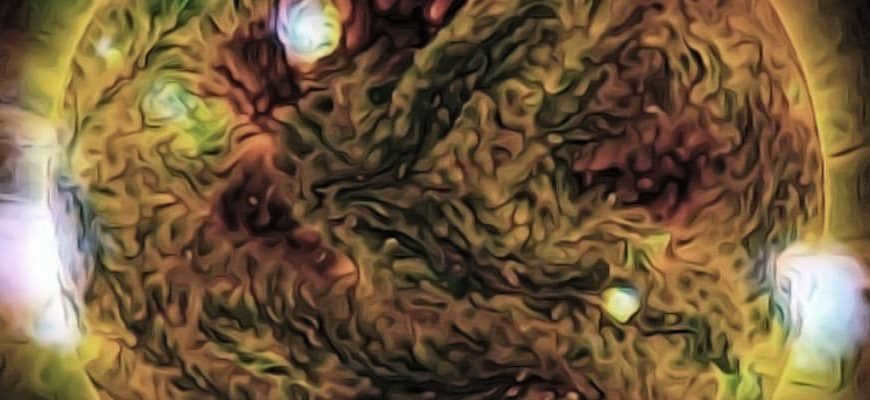
Hydrogen makes up 75% of the matter in the universe, while helium accounts for 23%. This distribution of elements originated from the Big Bang. Nebulae, which are vast clouds of cold molecular gas and dust, serve as the primary reservoirs for these elements. Occasionally, the formation of stars begins when a nearby star or a cluster of matter exerts a gravitational disturbance. The process can be visualized as follows.
Due to the force of gravity, the gas begins to aggregate and increase in temperature. As the total momentum of the particles within the cloud accumulates, it initiates a rotational motion. The majority of the mass consolidates at the central region. However, the cloud’s swift rotation leads to its flattening into a protoplanetary disk. It is from this disk that the eventual formation of planets will occur. However, that is not the subject of our discussion today.
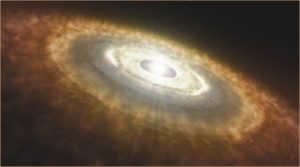
Our focus lies on the core of the disk as it is the birthplace of a star. It is here that the highly concentrated gases start to heat up due to the gravitational collapse of hydrogen and helium. Over a period of approximately 100,000 years, the temperature continues to rise. Eventually, a protostar emerges, a dense and hot entity that precedes the formation of a fully-fledged star. Despite not being a complete star yet, it holds great interest from a physics standpoint. The material within the protostar’s core continues to contract for another 100 million years until the temperature and pressure reach a point where thermonuclear fusion can be initiated. At this stage, the object officially transitions into a main-sequence star.
The primary period of the star’s existence
The star is currently experiencing the most extended phase of its life, known as the main-sequence phase. The predominant characteristic of this stage involves the occurrence of nuclear fusion within the star’s core. This transformative process, which all stars undergo, converts hydrogen atoms into helium atoms. As a result of this reaction, an immense amount of energy is released. This is the reason why the Sun has continued to emit light for countless years, enabling the development of life on Earth.
To gain a better understanding of this concept, let us delve into the fusion process to examine the precise events that occur.
The process that takes place in stars, known as the proton-proton chain, is also referred to as fusion. During this process, the star’s core reaches extremely high temperatures, around 15 million degrees Celsius. At such extreme temperatures, particles within the core move at incredibly fast speeds, leading to frequent collisions. One might wonder how protons, which have the same charge, can collide without repelling each other. The answer lies in their speed. When two protons approach each other at high speeds, one of them undergoes a transformation into a neutron, which is a particle with no charge. The specific mechanism behind this transformation involves the complex field of quantum mechanics, which is beyond the scope of this discussion.
Fusion energy is responsible for maintaining the stability of the star by producing energy. The energy emitted from the core causes the star to expand, but gravity counteracts this expansion by pulling the star inward. This delicate equilibrium between fusion and gravity prevents the star from collapsing under its own weight or being torn apart by the energy produced through fusion. As a result, stars in this phase of evolution are able to maintain a relatively stable state.
The phase of the red giant
Nevertheless, nothing endures eternally beneath the moon. Not even the cosmos. Throughout its existence, a star slowly consumes all the hydrogen within its core and transforms it into helium. Once the star depletes its hydrogen supply, the thermonuclear reactions cease. Absent the internal force that prevented the star from imploding under its own mass, the star commences shrinking as a result of gravity.
The duration required to reach this phase differs from star to star. For instance, red dwarfs, which are the least massive stars and possess half the mass of the Sun, can sustain their fuel for hundreds of billions or even trillions of years. They are capable of doing so due to their relatively low fusion rates. On the other hand, larger stars like our Sun typically remain in the main-sequence stage for approximately 10-15 billion years. The largest stars, however, have the shortest lifespans, lasting only a few billion or even just a few million years. This is because they rapidly deplete their hydrogen fuel.
As the immense gravity of the star causes the outer layers to separate from the core, the hydrogen within them becomes heated to a level where fusion can resume. It’s important to note that this depletion only occurs within the core, not the surface layers. This restarts the fusion process and causes the star to once again become brighter, reaching a brightness 1,000 to 10,000 times greater than before. Simultaneously, the outer layers of the star expand outward, resulting in a significant increase in size. In an instant, the star is revitalized and resumes the fusion of elements within its outer layers.
Scientists believe that a similar event will occur with our Sun in approximately 4 billion years, and our Earth will be directly affected by this process.
A star exhibiting these characteristics is referred to as a red giant, and it will remain in this state for the next several million years.
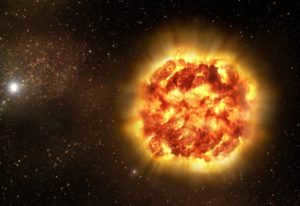
The ultimate progression of stars.
Following this juncture, the destiny of every star can diverge. Stars with a mass below 8 solar masses will ultimately reach their demise once the hydrogen on their surface is exhausted. The core temperature of such stars will never again reach the necessary levels to facilitate the creation of elements heavier than helium. These stars will gradually release their outer layers into the void of space. They will then contract and ultimately transform into white dwarfs. Astronomers refer to this as a stellar remnant.
This is not the situation for larger, more massive stars. The temperature and pressure within the core of the star will ultimately reach a threshold where helium can be transformed into carbon. Stars that are significantly more massive than our Sun will continue this process, generating increasingly heavier elements. Carbon will merge with oxygen, oxygen with neon, and so forth. Nevertheless, even in this scenario, the process will not continue indefinitely. It will all culminate when it comes to the production of iron. No star can achieve temperatures that are sufficiently high to synthesize this particular element. And it comes to an abrupt halt. Without fusion to sustain the star, gravity emerges victorious. And compresses the star inward.

